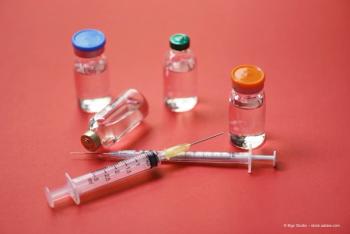
ARVO 2024: Exploratory analysis of pivotal phase 3 trials, YOSEMITE and RHINE, for vabysmo in DME
At this year's ARVO meeting, Daniela Ferrara, MD, PhD, FASRS, presented a paper on predicting functional outcomes for different treatment durations of faricimab in diabetic macular edema.
At this year's ARVO meeting, Daniela Ferrara, MD, PhD, FASRS, presented a paper on predicting functional outcomes for different treatment durations of faricimab in Diabetic macular edema.
Video Transcript:
Editor's note: The below transcript has been lightly edited for clarity.
Daniela Ferrara, MD, PhD, FASRS:
I'm Daniela Ferrara, I'm an ophthalmologist and retina specialist, and I'm Principal Medical Director for Genentech and Roche. I'm super proud of the research we presented this year at ARVO. We had several papers. I would like to highlight one in particular; this was an exploratory analysis of our pivotal phase 3 trials for our vabysmo in diabetic macular edema or DME, YOSEMITE and RHINE, and in this exploratory analysis, we assessed machine learning models in their capacity to predict, at baseline, functional treatment response for vabysmo over time.
We assessed the baseline treatment prediction response at 1 month, 24 weeks, or 6 months, in 1 year, according to the primary endpoint of the pivotal trials. What we tried in those experiments were different modeling approaches, and we fed the models with different baseline characteristics. We tried different clinical settings. We tried first feed[ing] the models with best corrected visual query at baseline to predict the best corrected visual acuity in those future time points. And then we retrain the models with other clinical characteristics such as demographics, age and sex, for example, and then imaging or disease characteristics, such as central subfield thickness, or other imaging biomarkers that were also extracted using AI-based segmentation models.
What we found in those exploratory analysis is that some of models could actually predict with promising accuracy at baseline future best corrected visual acuity after treatment. The performances we found were more reliable or promising at 1 month, or 4 weeks, or 24 weeks or 6 months. The prediction for the 1 year visual acuity treatment response was more challenging, the models were less stable. So for future research, we plan to continue to test new modeling approaches, different baseline characteristics to feed the models or larger additional more diverse data sets.
Newsletter
Keep your retina practice on the forefront—subscribe for expert analysis and emerging trends in retinal disease management.








































